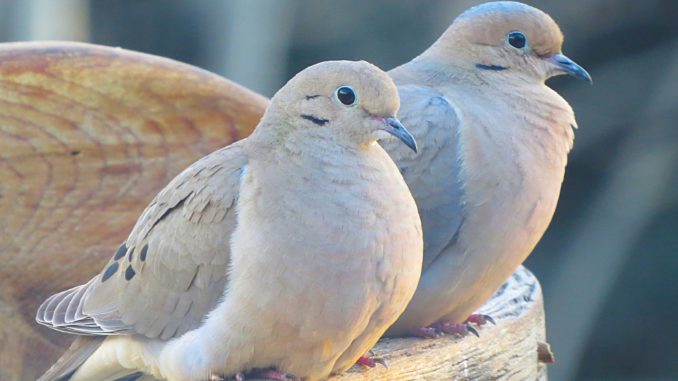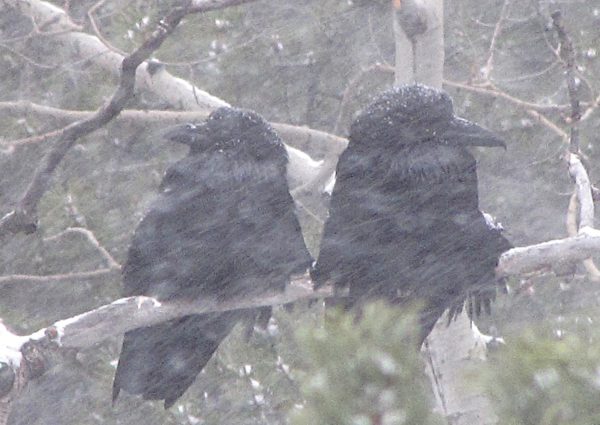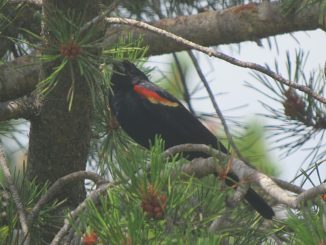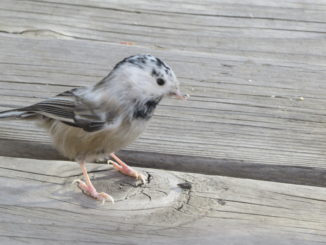
Sally Roth
[email protected]
No matter what the weather happens to be around Valentine’s Day, love is in the air. Just listen, and you’ll hear it.
Step outside at night to catch the deep bass notes of the easiest singer to recognize—the great horned owl, who’s been sounding off with its Hoo-hoo-hoooo for more than a month.
At the feeder, chickadees are adding a two-note Fee-bee song to their usual dee-dee-dee chatter.
Okay, so those songs may not be as heart-tugging as Whitney Houston singing “I Will Always Love You.” But these are definitely love songs. And soon that chorus will swell, as cooing doves, warbling house finches, whinnying flickers, and other birds join in with their own songs of the season.
Love is in the air, all right. And by “love,” I mean sex.
Lengthening hours of daylight kick sexual hormones into gear in bird brains, signaling the start of mating season.
Want to hear something romantic? Most birds mate for life.
“ ’Til death us do part” is the agreement for great horned owls, chickadees, robins, bluebirds, ravens and just about any other bird you can name, including the swans often held up as a paragon of dedicated marital life.
Want to hear something not quite so romantic? “Mating for life” does not mean strictly monogamous.
It’s not exactly a “forsaking all others” arrangement for many species. Although the bonded pair commits to building a nest and caring for a family year after year, many of those partners indulge in liaisons on the side.
And that goes for both males and females of the pair.
No wonder male birds are so territorial, chasing and fighting off any other male that dares enter the nesting territory. They’re trying to keep the trespassing males from mating with their partner, so that the genes carried in those eggs are all theirs.
Fat chance.
Researchers analyzing DNA of nestlings and their parents have learned that a brood often shows mixed parentage, thanks to females slipping over to visit a male neighbor—or vice versa.
We saw it ourselves with a pair of nesting chickadees at our home. We couldn’t figure out what species was using the nestbox—mountain or black-capped?—because both species were coming and going. Turned out the pair were mountain chickadees…but when the male was away, a black-capped suitor came to call upon the Missus.
Raising a nest full of babies is hard work, usually requiring both parents to spend all day, every day, gathering food to stuff down those hungry gullets.
If the eggs in the nest are from various sires, the male of the couple is rightfully reluctant to invest so much energy raising a family that doesn’t carry his own genes.
Male mountain bluebirds have been known to desert their spouse, if she’s too much of a flirt (“flirt” is putting it mildly), and start over with a partner that may be more loyal.
Oh, and don’t start planning a Golden Anniversary party yet for your “mated for life” birds, whether or not they’re truly monogamous.
“ ’Til death us do part” takes on new meaning when cats, hawks and other predators may nab that beloved partner after only a year or two of “marriage.” Two years is the typical and sadly brief lifespan of many wild songbirds, even though most could live for 10 years or more, if they didn’t get eaten or die in accidents.
But since it’s the month of love, how about a shout-out to the handful of birds that are truly monogamous, forsaking all others, with one partner and one partner only for both sex and raising the family?
It’s a short list: The celebrated swans, but also geese. Eagles. Ravens. Owls. Puffins. Cranes. Vultures. Maybe some doves. That’s it so far, but this is a relatively new field, dependent on DNA analysis, and research is continuing.

The pair bond between ravens is so strong that the birds eat together, drink together, sleep together, and travel together year round, except when they’re tending the nest.
Support Northern Colorado Journalism
Show your support for North Forty News by helping us produce more content. It's a kind and simple gesture that will help us continue to bring more content to you.
BONUS - Donors get a link in their receipt to sign up for our once-per-week instant text messaging alert. Get your e-copy of North Forty News the moment it is released!
Click to Donate



